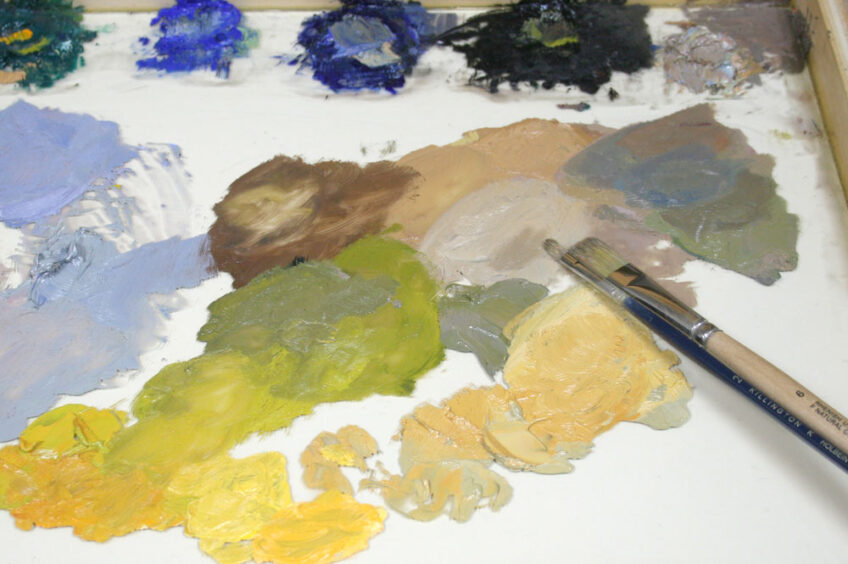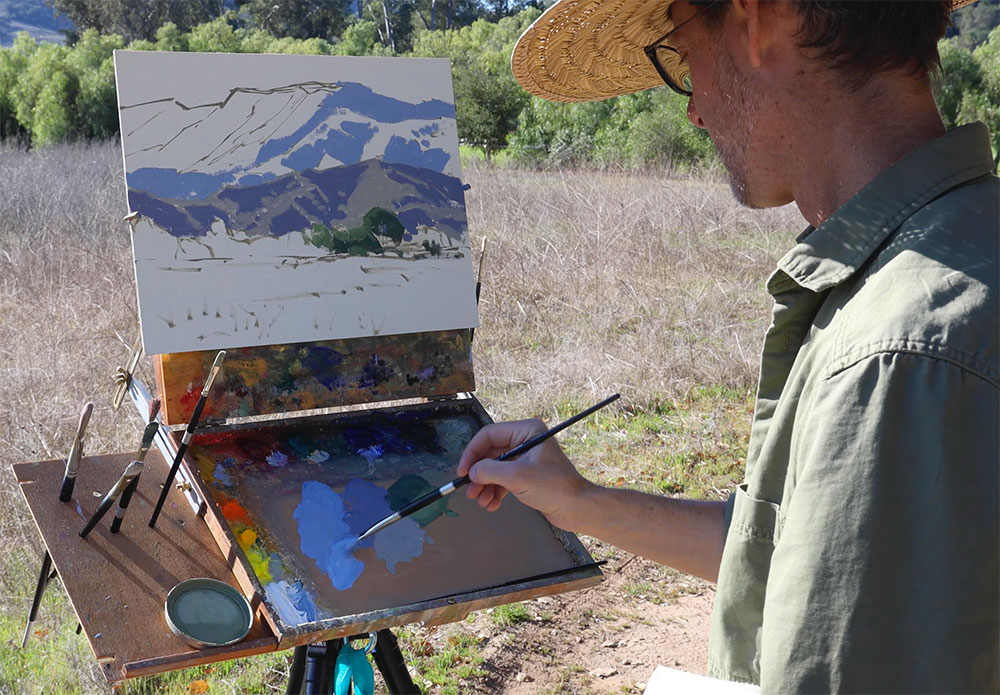Why do we paint? We artists have a deep desire within us that we are compelled to fulfill. It is the need to create. Or to put it another way, to express ourselves by responding to what we see and experience. I believe that this need to create is a reflection of the Creator and that he uses the beauty of his creation to communicate with us. If that is true, then we as artists have important roles to play in our society with our art’s potential to be a vehicle for communication between God and people.
Whether you believe that or not, you will probably agree that art has power. How many of you have watched as someone was physically affected as they viewed a painting? (Not just from breathing turpentine fumes.) Perhaps you’ve seen tears. Emotion. Maybe you’ve been affected yourself. Art is also used in therapeutic healing ways. Where does that power come from? There is some sort of connection or communication taking place between the art and the viewer. It’s interesting to ponder.
So how then do we prepare ourselves to be the most effective at communicating with our paintings? How can we confidently respond to what inspires us?
1. Work toward mastering the use of your materials and the fundamentals through ongoing practice and study (to brush up on these, explore my Sentient Academy video courses)
- Design
- Shape accuracy (drawing)
- Value
- Color
- Paint application (including edge handling, texture and brushwork)
2. Make sure you know why you want to paint each painting
- What speaks most to you about your chosen scene?
- How can you best portray it to the viewer?
- Answering these questions allows you to begin to put yourself into your paintings
3. When presented with multiple ideas, don’t cram them all into one painting
- Try multiple paintings so you can focus on each element that interests you
4. Start with accuracy, finish with feeling
- When painting from life or from a photo, it’s difficult to convey a feeling if you don’t start with accurate portrayal of what you see (your feelings are most often a direct result of the way your scene looks)
5. Apply your paint intentionally
- Try to visualize how each brushstroke will affect your painting
6. Simplicity = strength
- Strive for concise ideas and simple shapes
7. Find yourself in your style
- Your style grows from how you choose to paint over a long period of time (including your chosen materials and methods)
The artistic voice you develop is what will separate your work from that of others and give you the most fulfillment as you continue along your creative path.
Can you think of other things that can help us paint more confidently? Leave a comment below!


16 Responses
Eric Bowman
Good words, Dan — especially not cramming multiple ideas into one painting! Missed you at SPA this year — hope you’re doing well.
Dan Schultz
Thanks, Eric — I missed painting with you guys too. I like what you’ve posted on FB from the event. I decided not to submit for it this year since I knew I would have my family all with me for Mendocino. Maybe I’ll shoot for SPA again next year….
Penelope
I must agree and thanks for the clarity of your words. We artists need to be reminded for those times when we have no idea what we’re doing and why we do it. I feel that God works through all people and it’s our responsibility to spread the light and present whatever form that message takes. Collectively, there will always be more light than dark when we all do our part to mimic the great creator. The greater purpose makes all the hard work make sense.
Dan Schultz
Thanks for your comment, Penelope!
Sherri Trout
Thank you for sharing your wisdom Dan. Most appreciated!
Rob Impellizzeri
Excellent thoughts, Dan. They further reinforce my need to find a scene that inspires me before I consider painting it. If a scene bores me why would the viewer not be bored as well? Clyde Aspevig describes his method of ‘land snorkeling’ for 20 minutes or so to find a scene that inspires him, and only then does he feel compelled to paint.
Dan Schultz
Thank you for commenting, Sherri and Rob!
Carolyyn Paterson
Dan, i appreciate the inspiration as I needed these reminders. I hope to study with you one day. I am not able to make this coming workshop.. Keep me posted on the dates of the next one. Carolyn
Dan Schultz
Thank you, Carolyn — I’ll keep you posted!
Jair Grandin
Dan grato pelas lições, tenho aprendido muito com elas, abraços!!!
Dan Schultz
Glad to hear it. Thank you!
Marge
Very much like your statement about art being a “vehicle for communication between God and people! Did I ever tell you that on one of our trips we saw the Mona Lisa? Aunt Marge
Dan Schultz
That’s probably the most famous painting in the world to see!
Ruth Bosveld
Thank you, Dan. Well expressed.
Stefan Ullrich
Great post, Dan. I agree compöetely with you.
Best Stefan
Donna
Insightful writings. Thank you for sharing them Dan.